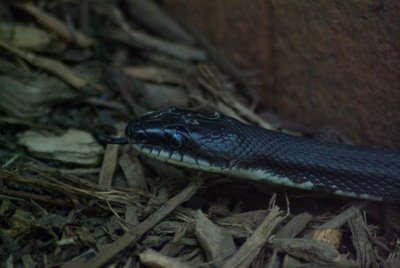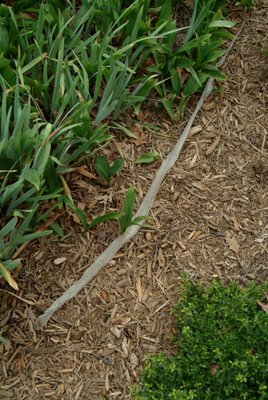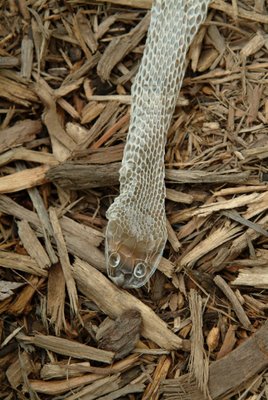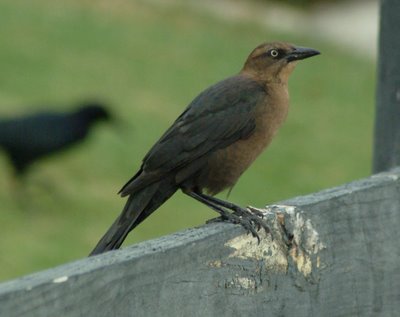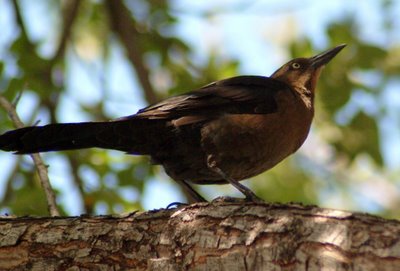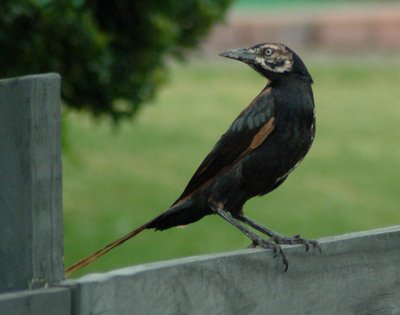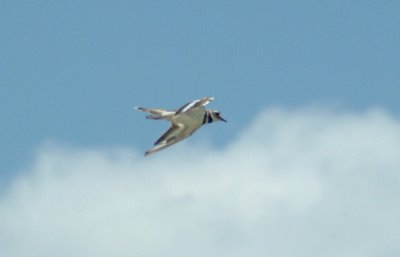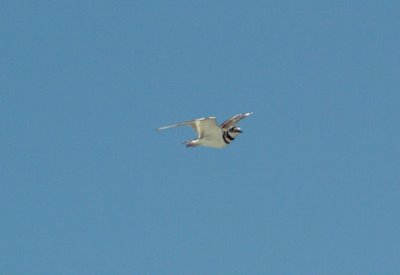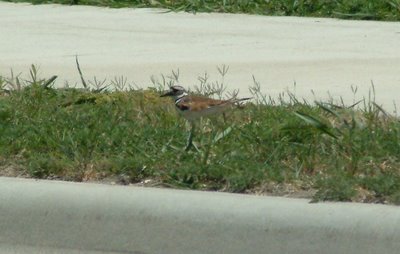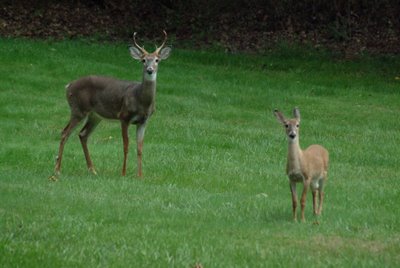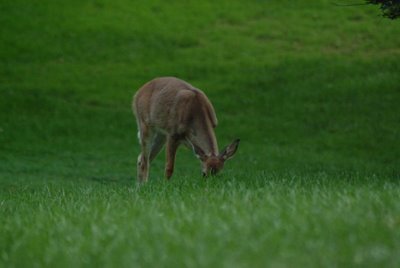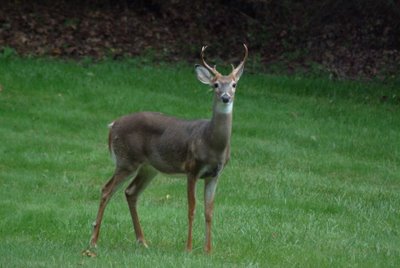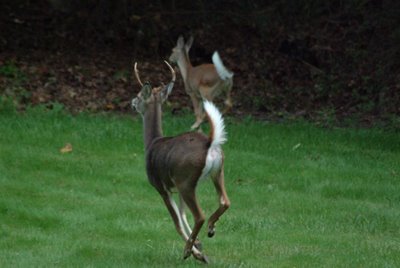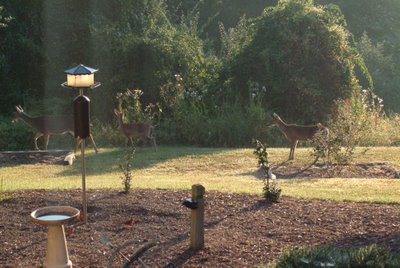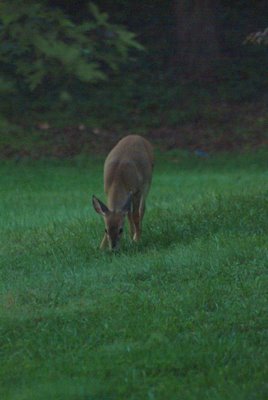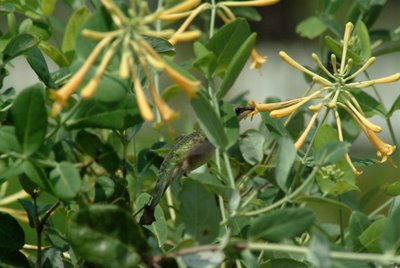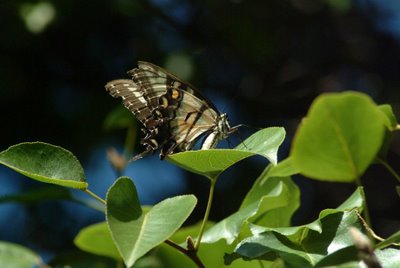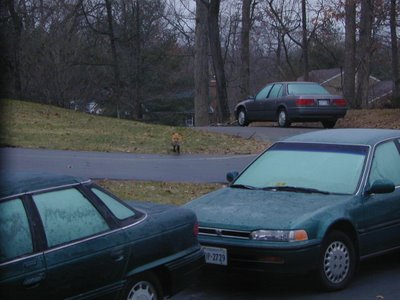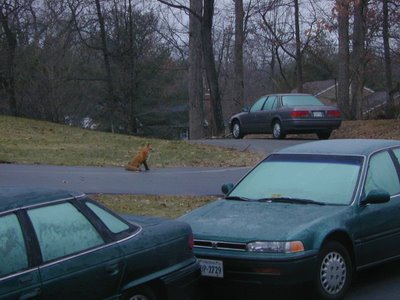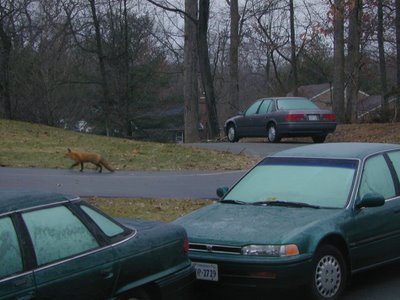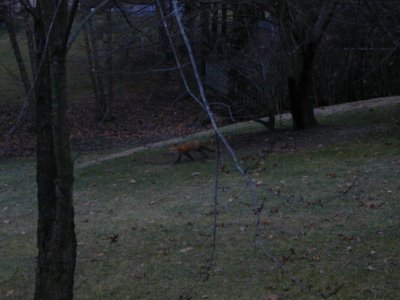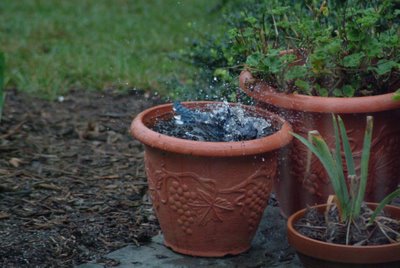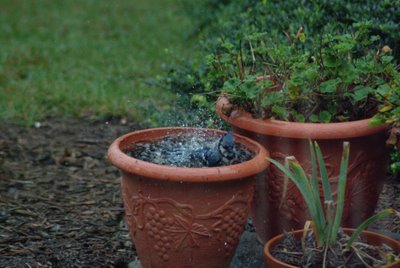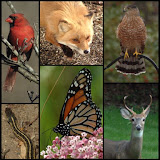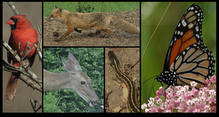Habitat Hawk Finally Photographed
 No observed visitor to the Habitat has been harder to photograph than the occasional hawk. This past summer, one hawk was observed swooping through the habitat and catching a cardinal. The hawk did this while in flight continued to a nearby tree and then flew off. This happened so fast that I was unable to photograph the incident. Two weeks ago, I walked out onto the back porch only to spook a hawk that was on the group under the feeder. Last week, I observed a hawk flying about 25 feet over the habitat and the feeder. He finally landed in nearby trees. When I finally caught up with him, he moved on through the woods and I was left without a photo.
No observed visitor to the Habitat has been harder to photograph than the occasional hawk. This past summer, one hawk was observed swooping through the habitat and catching a cardinal. The hawk did this while in flight continued to a nearby tree and then flew off. This happened so fast that I was unable to photograph the incident. Two weeks ago, I walked out onto the back porch only to spook a hawk that was on the group under the feeder. Last week, I observed a hawk flying about 25 feet over the habitat and the feeder. He finally landed in nearby trees. When I finally caught up with him, he moved on through the woods and I was left without a photo.
This morning, one of the hawks visited again. I observed him flying over the feeders at about 6 feet above the ground. He perched in the dogwood tree. By the time I got the camera and ran into the habitat, he had moved to one of the back maples tree, where I took this first photograph. As I attempted to get closer, he flew away.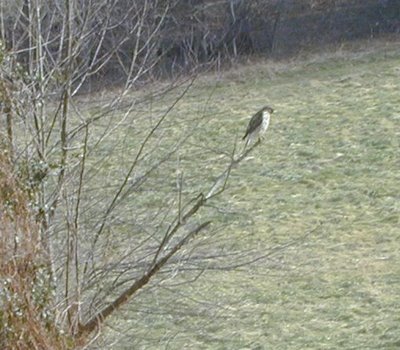 My younger son, Ryan, actually managed to photograph a hawk in the habitat in December 2003 (the second photograph). Ryan always reacts quickly to get the camera and the shot.
My younger son, Ryan, actually managed to photograph a hawk in the habitat in December 2003 (the second photograph). Ryan always reacts quickly to get the camera and the shot.
My best guess is that both hawks (today’s and the one in 2003) are red-tailed hawks, as these are the most common hawks in the mid-Atlantic. Also, I offer the following observations, the white chest, rust tail with barring (seen when he was flying), and yellow cere.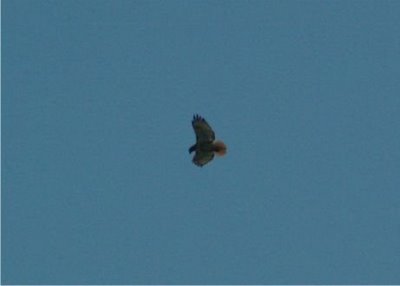 I did photograph a red-tailed hawk (third photograph) in flight this past spring at the Pickering Creek Audubon Center on Maryland’s Eastern Shore.
I did photograph a red-tailed hawk (third photograph) in flight this past spring at the Pickering Creek Audubon Center on Maryland’s Eastern Shore. 

